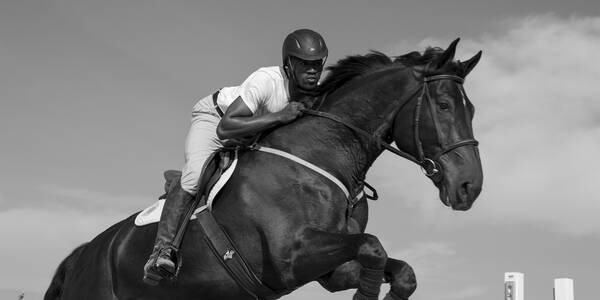legacy / alumni / college-news / photography-and-imaging / spring-2021
December 18, 2020
Writer: Mike Winder
“HE TAUGHT US TO SEE”: PHOTOGRAPHER AND ALUMNUS LEE FRIEDLANDER TO RECEIVE ARTCENTER’S LIFETIME ACHIEVEMENT AWARD
Photographer Lee Friedlander prefers to let his work speak for itself.
In what may be the longest collection of sentences the notoriously private ArtCenter alumnus ever uttered, Friedlander described his medium of choice like this: “I only wanted Uncle Vern standing by his new car (a Hudson) on a clear day. I got him and the car. I also got a bit of Aunt Mary’s laundry and Beau Jack, the dog, peeing on a fence, and a row of potted tuberous begonias on the porch and seventy-eight trees and a million pebbles in the driveway and more. It’s a generous medium, photography.”
His work was the focus of a major traveling retrospective and catalog organized by the Museum of Modern Art in 2005. In 2011, Yale University Press published In the Picture: Self-Portraits 1958-2011, a highly praised catalog of Friedlander's self-portraits spanning his entire career. In 2005, ArtCenter awarded him an honorary doctorate. And on December 19, 2020, Friedlander will receive ArtCenter’s Lifetime Achievement Award as part of the College’s 14th Annual Alumni Awards.

Friedlander began capturing the American social landscape in 1948. His 2019 book Friedlander First Fifty (Haywire Press), an introduction to 50 of his most important publications, is overflowing with winking self-portraits, meditative landscapes, wistful storefronts, surreal hotel rooms, tender family moments, and countless other subjects. Nearly impossible to categorize, his dynamic compositions demand your attention, and the often dense amount of information conveyed in each image rewards you more the longer you spend in its presence.
“Lee was to photography what Alice Waters was to food, in that he worked with the natural ingredients,” says Frish Brandt, President of Fraenkel Gallery, the 41-year-old San Francisco photography-focused gallery that represents Friedlander, and whose inaugural year featured exhibitions by Carleton Watkins (1829–1916) and Friedlander. “He worked with what was there. Lee didn’t teach us how to see. He taught us to see.”
The first photograph Brandt ever purchased was Friedlander’s Cleveland (“It’s a girl in a mismatched plaid outfit, standing on the sidewalk with her hands by her side”), which she purchased when she was on staff at Fraenkel, long before she became a part owner of the gallery. Brandt recalls the time decades later when Friedlander accepted his honorary doctorate at ArtCenter and the brief words he shared with the attendees at the ceremony. “There was so much happening with photography at the time, so many elaborate things going on,” says Brandt. “His Leica was around his neck, and he picked it up and said, ‘My studio is with me wherever I go.’”
“Lee’s work is revolutionary in that it celebrates what is hidden in plain sight,” says Dennis Keeley, Chair of the College’s Photography and Imaging Department.
Keeley remembers first seeing Friedlander’s work in a photography course taught by photographer Ben Lifson in the 1970s. He recalls seeing hundreds of slides each week in class, featuring work by photographers that demonstrated some of the themes being developed throughout the 20th century. Among the artists featured were Diane Arbus, William Eggleston, Garry Winogrand and Robert Frank.
“These particular kinds of photographs looked dazzlingly complicated, sometimes funny and always difficult to fit into some category,” says Keeley. “Every once in a while, something appeared on the screen [that], as I looked at it, challenged and changed [not only] all the rules of what I thought were the answers, but more critically, it changed the questions.”
Questions which, most likely, would be answered only in the mind of the viewer, as Friedlander rarely discusses his work and even more rarely agrees to be interviewed. One instance in which he did allow himself to be interviewed was for a 2017 "Live from the New York Public Library" conversation between Friedlander and his grandson Giancarlo T. Roma.
In that interview, available for listening on the NYPL website, Roma asks his grandfather about the seminal 1967 Museum of Modern Art exhibition New Documents, which featured Friedlander, along with Arbus and Winogrand—all of them relatively unknown at the time. Touching on how photography was not treated as an artform during that period, Roma asked Friedlander about a sale from that show. “We all got an inquiry from a guard at MoMA," Friedlander said. "And it was the only inquiry. Diane, Garry and I all got together, because we’d never sold a print, and we decided that $25 was right. And that was the only sale we made.”
In 2017, MoMA held an event titled "New Documents: Fifty Years Later," which brought together influential figures who had visited New Documents when it first opened in 1967. Among those figures was art critic Max Kozloff, who reviewed New Documents for The Nation during the exhibition's original run. At the 2017 event, Kozloff discussed the work of Arbus, Friedlander and Winogrand. During his presentation, he described Friedlander's work as inhabiting an "innovative but unannounced still life attitude or mentality," which it accomplishes through the "intensity and condensation of the contents of the frame itself, making the frame a constrictive agent that contains a most excitable material, whether they be vegetable or human."
Kozloff ended his talk by reiterating something he had written about Friedlander in Arbus, Friedlander, Winogrand: New Documents, 1967, a MoMA publication produced to coincide with the exhibition's 50th anniversary: "In [the book], I speak of him as a loquacious minimalist. This is an interesting contradiction in terms, which is where I think his work leaves us."
Related

profile
From fine art to advertising, alumna photographer and director Melodie McDaniel lets the light in
October 22, 2020

podcast

Change Lab Podcast 37: Photographer Barbara DuMetz on bringing diversity to both sides of the lens
October 14, 2020

profile


